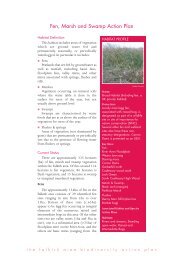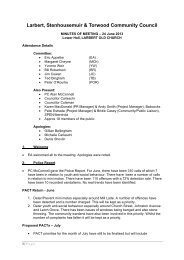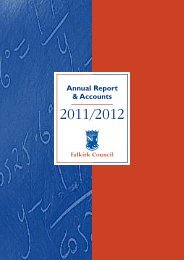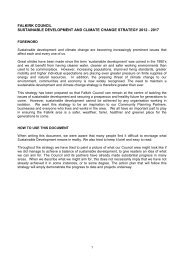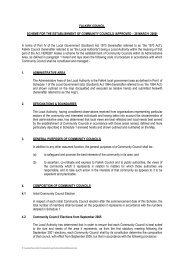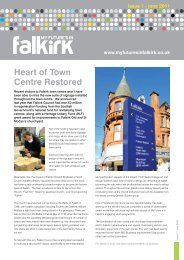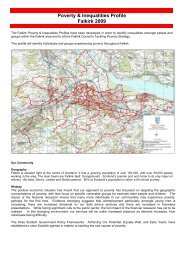Strategic Housing Investment Plan 2010 - Falkirk Council
Strategic Housing Investment Plan 2010 - Falkirk Council
Strategic Housing Investment Plan 2010 - Falkirk Council
You also want an ePaper? Increase the reach of your titles
YUMPU automatically turns print PDFs into web optimized ePapers that Google loves.
8.5 In addition to these 10 SIMD Priority Areas there is substantive housing<br />
regeneration activity in other parts of the <strong>Falkirk</strong> <strong>Council</strong> area including:<br />
• Town centre areas, where the redevelopment includes existing and<br />
proposed residential accommodation,<br />
• Substantive housing refurbishment projects, for example at Little Denny and<br />
at Drum Road and Corbiehall, Bo’ness,<br />
• New <strong>Council</strong> house building as set out in paragraphs 5.28 and 5.29 above.<br />
8.6 Ongoing estate-based improvements in the Priority Areas are identified through the<br />
development of annual Neighbourhood Improvement <strong>Plan</strong>s which seek to enhance<br />
amenity through environmental improvement projects and housing management<br />
initiatives to complement upgrading of the housing stock. An important factor in<br />
this work is the increasing need to work with owner-occupiers in what are now<br />
multi-tenure estates as a result of the Right to Buy legislation.<br />
8.7 Estate-based environmental improvements are taken forward through a<br />
combination of internal and external funding packages. The funding contributions<br />
from <strong>Falkirk</strong> <strong>Council</strong> allow grant applications to outside sources and can also<br />
encourage communities to make their own funding applications. For example, The<br />
<strong>Housing</strong> Estates Regeneration Outcomes Squads (HEROS) is funded through a<br />
number of sources, including Fairer Scotland. The HEROS provide local people,<br />
particularly local young people, with the opportunity to carry out environmental<br />
improvement projects within their own community, as well as improving their<br />
employability skills. This allows local people to participate directly in the planning<br />
and implementation of local environmental improvements. This level of<br />
involvement is seen as a key part of housing regeneration.<br />
8.8 Spending constraints affecting external agencies, government organisations and<br />
local authorities are likely to affect the scale of future regeneration activity. It is<br />
therefore particularly important to identify projects where selective interventions can<br />
yield significant regeneration outcomes. This means working even more closely<br />
with community groups and with community organisations. It also means that the<br />
scale of the projects may be smaller, focusing on projects such as local community<br />
gardens, school grounds, safe footpaths, improving privacy, treating local eyesores,<br />
and so on.<br />
56



